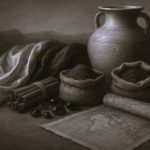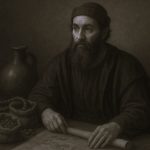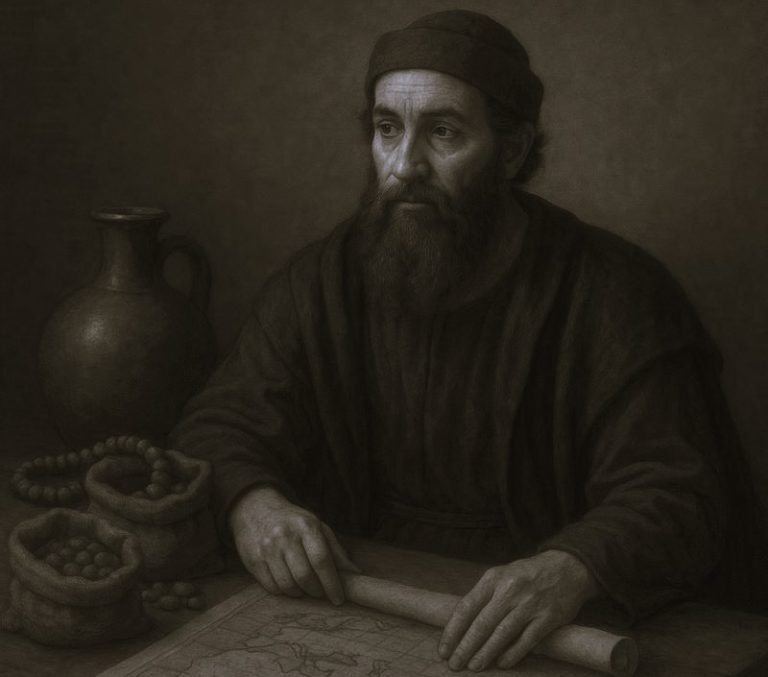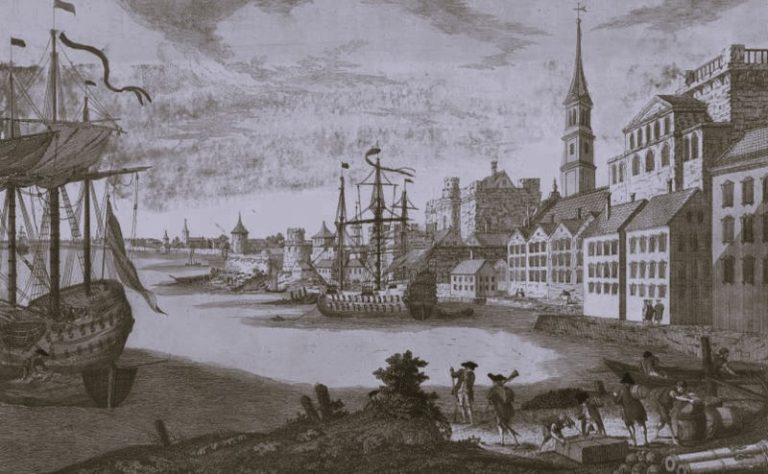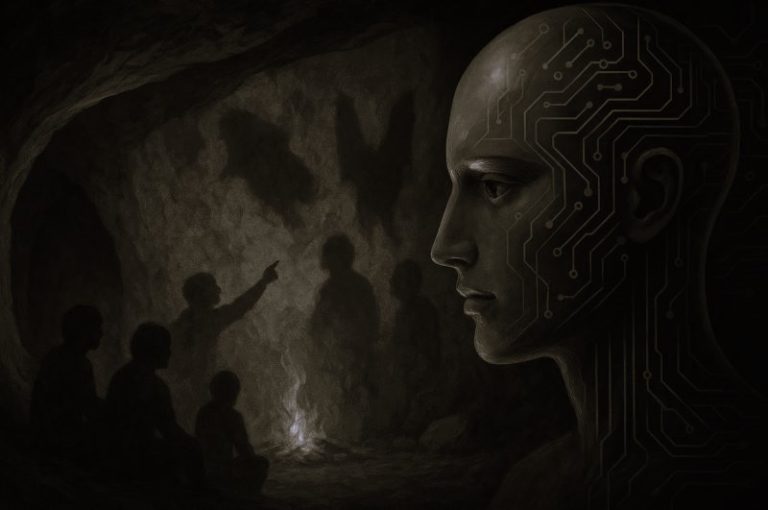

By Dr. James Cuno
President and CEO
J. Paul Getty Trust
During the late 19th and early 20th centuries, France taught its citizens about its overseas territories in the Caribbean, Latin America, Africa, and Asia through commonplace, mass-produced items including postcards and board games. Through these materials, the government attempted to capture and publicize a grand image of France’s empire while also justifying colonization. These same objects are now critical for understanding the often-violent story of French colonialism and its lasting impact on immigration, race relations, and nationalism. Many such items are held in the Getty Research Institute’s collection of the Association Connaissance de l’histoire de l’Afrique contemporaine (ACHAC, the association to foster knowledge on contemporary Africa).The new book Visualizing Empire: Africa, Europe, and the Politics of Representation analyzes this fascinating archive.

In this episode, Visualizing Empire editors Rebecca Peabody, head of Research Projects and Programs at the Getty Research Institute; Steven Nelson, dean of the Center for Advanced Study in the Visual Arts at the National Gallery of Art in Washington, DC; and Dominic Thomas, the Madeleine L. Letessier Professor and chair of the Department of European Languages and Transcultural Studies at the University of California, Los Angeles, discuss French imperialism, its legacies, and how these everyday objects might be used to reexamine and even decolonize this narrative.
JAMES CUNO: Hello, I’m Jim Cuno President of the J. Paul Getty Trust. Welcome to Art and Ideas, a podcast in which I speak to artists, conservators, authors, and scholars about their work.
DOMINIC THOMAS: One of the things I’ve heard most frequently in attending and working with and participating with ACHAC at different events, is to hear young people, and even adults, say, “I had no idea. I did not know that back at this particular historical juncture, my ancestors were put on display in the city, in these parts, for entertainment.”
CUNO: In this episode, I speak with Rebecca Peabody, Steven Nelson, and Dominic Thomas about their recent book Visualizing Empire: Africa, Europe, and the Politics of Representation.
In 1997 the Getty Research Institute acquired a visual archive comprising more than five hundred photographs, two thousand postcards, and hundreds more items including maps, advertisements, and children’s games. These objects document French colonial attitudes and post-colonial legacies. The archive had been assembled by ACHAC–an acronym that stands for Association Connaissance de l’Histoire de l’Afrique Contemporarine or, in English, the association to foster knowledge on contemporary Africa.
Over a number of years, a group of scholars closely studied this collection before turning it into the subject of a new book. Titled Visualizing Empire: Africa, Europe, and the Politics of Representation, this collection of essays is published by the Getty Research Institute and edited by Rebecca Peabody, head of Research Projects and Programs at the Getty Research Institute; Steven Nelson, dean of the Center for Advanced Study in the Visual Arts at the National Gallery of Art in Washington, DC.; and Dominic Thomas, the Madeleine L. Letessier Professor and chair of the Department of European Languages and Transcultural Studies at the University of California, Los Angeles. Rebecca, Steven, and Dominic joined me recently to discuss this archive and their publication.
Thank you, Rebecca, Steven, and Dominic, and welcome to the podcast. Now Steven, what provoked you to embark on this project?
STEVEN NELSON: That’s a great question. And thank you, Jim, for having us here.
The project started with a conversation I had with Gail Feigenbaum, associate director of the Getty Research Institute. In 2012, she asked me if I wanted to write a book on a group of materials in the Special Collections called the Association Connaissance de l’Afrique Contemporaine; or in English, the association to foster knowledge on contemporary Africa. And the association is ACHAC.
I actually first became familiar with ACHAC in the mid-1990s, when I was working on my dissertation. And so I was in Paris and went to their offices there and started looking through some materials there and starting talking to people there. And also, there were materials I used in my dissertation and book from it.
And so I went into Special Collections and starting tooling around the archive, and became somewhat obsessed with it. But I also knew I didn’t wanna write book by myself on it. And so that’s when I went over to Rebecca. Gail and I went to Rebecca. And that was part two. So I’ll let Rebecca jump in on that.
REBECCA PEABODY: I had know about the ACHAC materials and I had done a little bit of work on them myself, and was hoping to see more work done. And Steven and I started talking about this idea and I immediately became excited about it as a potential research project for us.
We have a cluster of research projects that we run at the GRI that are made up of teams of collaborative scholars who are united by their interest in digging into the materials and really activating them in multiple ways on the way to an outcome.
So from the beginning, as soon as Steven and Dominic and I started talking about the project, we were eager to have a workshop to bring scholars together, to teach a graduate seminar in the collections, and then to eventually produce an edited volume so that we could incorporate perspectives from a number of different fields of scholars. And to me that seemed like the perfect fit for one of our research projects.
CUNO: Rebecca, tell us about the process of conceiving of the book and then the execution of the book and finally, the publication of the book.
PEABODY: Sure. Well, this is a process that dates back about six to eight years now. We knew from the beginning that it would need to be an intentionally interdisciplinary group of scholars that we brought together to work on these materials and to activate them. So we gathered our group of contributors and invited them to spend time at the GRI in the ACHAC materials individually, one by one.
And then after everyone had had some time in Special Collections, we brought the group back together in a workshop. And that was a great occasion for us to talk about our research and our different points of entry into the collections, what we discovered, and to start thinking through how these different interventions could be woven together into a comprehensive book.
And then after the workshop itself, everybody dispersed and went back to their home institutions, and we wrote our essays and then brought them back together into the book. So it was really an iterative process that was intentionally designed to be that way, to build a discursive component to the research over the years, so that we ultimately had a book that was much more than the sum of its parts; it was the culmination of a group conversation that we had initiated some time ago.
CUNO: How did the archive make its way to the Getty?
PEABODY: That’s a great question. Well, Dominic can tell us a little bit more about global ACHAC, which is how I think of the much larger organization. But the portion that we do have at the GRI came to us in the late 1990s, when my colleague Frances Terpak, who’s a curator at the GRI, brought a portion of ACHAC’s materials into the GRI as part of a larger collecting initiative that she was then directing, that was focused on France and it is colonial history.
But that gets us back to the global ACHAC, Dominic. Can you fill us in on that?
DOMINIC THOMAS: Yeah. I mean, that’s, you know, one of the amazing things about this collection, of course, is that it’s at the Getty and not in France.
You know, the ACHAC organization essentially, and these ACHAC materials are really the product of a labor of love between three French scholars—a historian, an anthrobiologist and a filmmaker, a military historian; Pasqual Blanchard and Gene Bursch and Eddie DuRue[sp?]—who met in the 1980s and realized that they had, you know, collectively, this passion for collecting this sort of wealth of colonial ephemera that essentially ended up making it into this collection.
And I think they needed it to be in a museum context. And of course, there was nowhere in France that was—or even to this day, one could argue—that would’ve been interested in this. And so they ended up creating this collective, really, that was known by the acronym ACHAC, which is this Association pour la Connaissance de l’Histoire et [sic] de l’Afrique Contemporaine, is essentially an association aimed at promoting knowledge and awareness about the history of Africa.
And today, it’s just become a research group, but it continues to work in this realm. And I think it was Fran Terpak that understood the importance of these materials, and that the Getty would be a great place for them to get better visibility and to be used by scholars and researchers.
CUNO: How were they put together? That is, how was the archive put together? Was it put together and acquired en masse?
THOMAS: So my understanding of the Getty is that it was acquired, you know, en masse, and that Fran met with them in Paris, right? And that they had started the process of organizing these materials. And she was able to acquire the bulk of them and bring them to the Getty in 1997.

CUNO: Well, what made it so interesting to the Getty and not interesting enough for the French?
THOMAS: Well, the French context is so incredibly problematic when it comes to dealing with the whole history of colonialism, right? And thinking and talking about colonialism in France is ultimately to put the entire ideals of the French republic to sort of greater scrutiny. I mean, there are debates raging in France today about the sort of the importation of American scholarly models, especially around race and so on and so forth, that are deemed unacceptable to so many. And there has not been a space in France that has been able to accommodate these kinds of materials, even though there is a growing number of researchers that are interested in these kinds of materials.
CUNO: Steven, you say—that is, you, the collective three of you—say your goal was to reveal the complex ways in which the French displayed, defined, and represented their empire. Why the French?
NELSON: Part of it is pragmatic. It’s what we had in the collection. There’re certainly these kinds of materials in other colonial contexts. But in terms of why this collection came together, it comes back to what Dominic was saying about these three men in France. And the reason that these things didn’t stay in France has so much to do with French debates, and also the French attitude towards its colonial past. Which, up until fairly recently, has not been very critical. In many ways, they would like to forget that it happened. And I think, you know, Dominic described it very well when he said that it brings under scrutiny the whole raison d’être for their being.
CUNO: Could you say the same about the British or the German or the Italians, or is there something particularly French about this? Dominic?
THOMAS: Quantitatively and even qualitatively, I mean, I think nothing compares to the wealth of material that the French produced. I mean, their Ministry of the Colonies sponsored this massive visual apparatus that was deployed, really, to highlight he diversity of France’s international colonies, and to cultivate French interest in France overseas, and to bolster this idea of French grandeur on the German stage.
So you see analogous examples in Germany. There was, in 2016–17, at the Deutsches Historisches Museum, the German Historical Museum in Berlin, an exhibit that was called German Colonials: Fragments Past and Present. And you saw there board games and toys, these beautiful cigarette albums. So if you bought cigarette packages, you got little collection cards.
And I do think that in the German context, the process of kind of reckoning with colonialism has been much a much more straightforward one, while simultaneously they have focused on addressing histories of, for example, the Holocaust and so on and so forth.
So when the German government, in 2015, recognized the genocide against the Herero and Nama peoples in southwest German colonial spaces at the time, it was a lot more straightforward than when French presidents have tried to kind of deal with these sorts of questions
. So materials exist in these other areas; but I think it’s the richness of them—the posters, the postcards, the advertising, and the multiple ways in which these were expressed in France—that genuinely tried to create this colonial culture, which was absolutely inextricably linked to the lives of people around the 1931 exhibit, which was the high point of this era.
CUNO: Now Rebecca, the term used in this to represent the nature of these materials is called the archive. And it has considerable currency today, talking about the archive. Why that term and why does it have currency now?
PEABODY: Well, I think we’re seeing more and more attention—and this is really important and urgent attention—being brought to the nature and constitution of archives.
So we can think of an archive, at its most basic, as a repository of historical traces. But we can also think about an archive as a repository of traces about collecting practices. Who did the collecting? What did they include? What did they exclude? What were the motives? What kind of story is being told by the materials? And we can also think of archive as a verb, as an intentional practice.
How is archiving being done? Who’s doing it? What kinds of intentionalities are brought? How many authors are contributing? Whose voices are being included? So I think some of the currency that you’re referring to, Jim, is because so much attention is being brought, so importantly, to archives as a point of departure for knowledge generation in a lot of instances, and the real importance of querying the architecture and the contents of those materials.
CUNO: Is there a meaningful difference between a collection and an archive?
PEABODY: We have collections of archives. For me, archive has connotations of collections of materials that are specifically reflective of a particular person or a particular movement or a particular group. And a collection could encompass multiple archives.

CUNO: Dominic, you say that much like the subject of colonialism itself, the colonial archive remains controversial in France. You began to tell us about that earlier. But tell us now, what do you mean by that? Why is it particularly controversial in France?
THOMAS: Yeah. Well, there are lots of ways of looking at it. I mean, historically, what’s interesting is President Macron is the first president born after the end of colonialism. I think that being born after that, growing up in a France for whom the concerns of colonialism were not the central defining moment of their period of growing up—May 1968 might have been. Getting beyond the French Algerian War. That means that there’s slightly less of a complex when it comes to dealing with these issues; that one can take a somewhat greater distance from these particular questions.
The problem in the French context is that the legacy of colonialism is important in many ways. Not only in the neocolonial relations between the French authorities and, let’s just say, the African continent, but also the incredible and remarkable presence which makes the diversity of France today so completely salient, of the descendants of that colonial era, who are living in France and who are still struggling with these kinds of questions.
And of course, these feed into contemporary debates around identity, around the legacy of the colonial war. In other words, they don’t have always the vocabulary to be able to think about colonialism through a kind of intersectional matrix that would look at race and history and so on and so forth and how that history could also better explain the challenges of contemporary French society, in which the question of diversity has been instrumentalized across the political spectrum in a whole range of controversies.
So you have a country that in 2001, for example, passed a law through the parliament that was still talking about the positive aspects of the French colonial experience. Now, it was subsequently abrogated. But there is this conflict between representing a great France that was colonial, that was glorious, that was overseas; and then somehow or other, that narrative, if criticized and if subjected to scrutiny, no longer stands up with the historical standing that France has enabled to hold in the world, which is a moral and ethical standing and so on and so forth. So you have a coming together of all of these questions and forces and so on.
CUNO: Steven, President Macron famously said, while visiting Algeria, “Colonialization is part of French history. It is a crime. It is a crime against humanity, a truly barbarous crime that is part of our history. And we need to confront this past by apologizing to the women and men against whom we committed these acts.” What particular acts was he referring to? Why did he make those remarks, on television, in 2017?
NELSON: I think that the remarks on television are part of what Dominic was talking about. You know, Macron’s distance from the colonial experience, the fact that he was not born into it, and his understanding, with that distance, that, that what happened in Algeria was a crime.
And I think we have to understand that at the height of colonization, the French controlled one-third of the world. But Algeria, colonized in 1830, was a special colony, because it was seen as part of France. It was seen as the backdoor. It was a settler colony, which was not true of most French holdings. But the French had a system of state sponsored terrorism and state sponsored violence to keep people from fighting for their independence. And it resulted in a bloody war.
The one act that Macron was referring to was the disappearance of Maurice Audin, who was a mathematician, and he was an anticolonial activist, who disappeared after the French arrested him in 1957. And so his wife kept asking, kept petitioning the government for answers. She never got them. And Audin is just one of thousands who had met the same fate and whose cases were not investigated.
The government and Macron came as close as it ever did to apologizing for these acts. And that enraged a lot of people in France, for the very reasons that we’ve been talking about. I mean, this is an open wound.
CUNO: Yeah. Dominic?
THOMAS: It’s important to underscore that 1830, it’s France’s oldest colony. It’s just across the Mediterranean. But its relationship is just punctuated by just repeated acts of violence, from the massacres that took place in Sétif, 1945, against pro-independence groups, all the way to the bloody war of decolonization, the Algeria War of Independence of 1954 to 1962.
You know, when Macron looks at the French electoral landscape today, and you see this sort of system in which there’s a runoff stage— And in the last round, in 2017, he ends up against Marine Le Pen, the daughter of Jean-Marie Le Pen, the person who founded this far right political party, who was himself a paratrooper in this war. But the emergence of the far right is inextricably linked to this sort of loss of empire, colonialization, nostalgia and so on.
And so what Macron also did—and as Steven said, you know, falling short of an apology, but nevertheless recognizing that France had engaged in systemic torture. This is a major sort of point. And then recently, has just, in a very clever political gesture that’s also been, of course, heavily criticized, is that he commissioned a report from Benjamin Stora, that is sort of the leading historian of the Algerian context in France, a report which was a report aimed at kind of memorial recognition between Algeria and France, to allow them to sort of move on from these kinds of stages. So it continues to play a crucial role in sort of defining what France is today.
And of course, a role that is constantly redefined in the history of immigration, which is so heavily debated and discussed around the question of North Africa and in France today.

CUNO: Now Steven, we raised the question about the 1931 International Colonial Exposition in Paris. Tell us more about that, about its origin, about its purpose, and its fate.
NELSON: 1931 wasn’t the first colonial exhibition, but it was the biggest. In France, there had been, you know, colonial expositions since the late nineteenth century. There were other countries that had large exhibitions of this type, as well. There were some in Britain, there were some in Brussels. There was even one in Naples in the 1930s.
But the International Colonial Exposition in Paris was massive. And it was at the height of, you know, what was called golden age of colonization in Europe, which spanned pretty much through the two world wars. So from World War I to World War II.
And in this exposition, like in others, you know, all of France’s colonial holdings were represented in pavilions. And so you would go into a place and you would learn about its industries. You see people from the place basically performing being people from the place.
And it was open for six months. And it was one of the most, if not the most successful World’s Fair in history. Most World’s Fairs, whether they were colonial or not, were massive financial failures. This one made money. And more than 28 million tickets were sold for this event.
It was this huge spectacle. It was covered everywhere, and it was covered international. And so it was a watershed moment, in terms of the representation of colonization. And it showed how popular it had become.
CUNO: Dominic?
THOMAS: One of the things, too, you know, about 1931 is, of course, travel had not yet been democratized. You didn’t get to leave the area of the country you lived in, unless you were, you know, sent overseas through the military or as a colonial governor or… So you traveled through the imagination. And this was an incredible full-scale staging of the glory of France abroad, in an attempt to enlist support for and love for, and to endear people to what went on in these particular places.
And those that had written about in, for example, you know, Colonial Culture in France Since the Revolution, one of the books produced by ACHAC, is that everything you did around that time involved the colonies. You turned on the radio or the wireless, you heard colonial songs. You went to the local boulangerie, the kids were given free games. And those games were board games. And they had on it images of all these great adventurers and explorers and colonial leaders and all the products that were associated with each place.
So learnt about what a pineapple was and where rum was produced, and sugar. So it was to promote a— you know, a taste for the colonies, the sounds for the colonies, and to travel and live vicariously, through this incredible overseas adventure that raised France up to the tremendous grandeur it was trying to recapture in this inter-war-year period.
NELSON: Yeah. And in fact, its slogan was, “You can take a tour of the world in a day.”
CUNO: So Dominic, if you were to have written a history of French colonialism twenty-five years ago, how would it have differed from a history written today?
THOMAS: Well, twenty-five years ago, I was working on these questions. The first thing I would say, Jim, there’s still no museum in France that deals with colonial history, right? So we still have a long way to go there.
But what I will say is that the conjunction between an activist agenda, between minority populations in France lobbying and pushing for and getting more involved in these questions, we have seen the emergence and the burgeoning of a tremendous group of younger scholars working in France on these kinds of questions.
And so even though that museum is not there, there have been some interesting transformations. I mean, the Palais de la Porte Dorée, which was built in 1931 for the colonial exhibition, that became a museum of modern art for Africa and Oceania, is now the Museum for the History of Immigration. And it has just appointed as its new director, Pap Ndiaye, who is a scholar working in France, whose father happens to be Senegalese, and who’s written a lot about the question of the Black France.
We also have, at this newly opened in 2007, the Musee Quai Branly Museum, which centralized all of the sort of holdings on Africa, Oceania, and so on and so forth, a new person running that, who used to run the cultural center in what was the— or what is the French overseas territory of New Caledonia, and who is sort of bringing then to the forefront, some of these overseas experiences, by privileging some of the collections that deal with the Kanak, that are the indigenous populations of New Caledonia.
And let’s not forget that Emmanuel Macron, in some ways, anticipated, or you could argue was slightly ahead of the game on the whole issue of decolonizing the museum, because he commissioned this report in 2017 that involved the Senegalese scholar, intellectual Felwine Sarr and the French art historian Bénédicte Savoy, that is called The Restitution of African Cultural Heritage: Toward a Relational Ethics.
So there’s been a lot more conversation and a lot more awareness about how museum spaces and research spaces in France could be more inclusive and could, therefore, better address the legacy of colonialism, of race, and other such matters in French history. And so that’s progress.
CUNO: And Rebecca, it’s common today to use the term the colonial imaginary. Tell us about that term; tell us what it means.
PEABODY: Sure. Well, I think a working definition of colonial imaginary could be something like a way of imagining the people and places that were colonized that justifies and appears to necessitate that colonization. Or in other words, the fictional narrative that explains and justifies the colonial project, along with the violence and disenfranchisement, complexities we’ve been discussing here today.
So in the ACHAC collection, we see both the visual traces of the colonial project as it was constructed through words and images. And we also see the colonial imaginary, because these images and items have been framed for us by ACHAC and the way they collected and brought them together to reveal both the colonial project and the colonial imaginary at the same time.
One of the opportunities that I think this book really brings up is that we’ve assembled an interdisciplinary group of scholars that are approaching these materials from really different perspectives. So we’re looking at the photos and the postcards, the board games that we were just discussing, military posters, and how all of these different items were mobilized in the construction of this narrative. So the book really tries to dig into the actual construction of the colonial imaginary and show how it was built, through these items.
CUNO: Now Steven, you also use the term decolonizing, when interpreting the historical significance of colonial archives, libraries, or art collections. What does it mean? And how does one decolonize an archive?
NELSON: That’s a really good question. And the way I would come in is to say that it would be a process of looking at the fissures in an archive. Because we think of archives as being these complete entities. And they’re fragments. They’re always fragmentary. There’s always some sort of gap, something missing, something that either someone chose not to collect or someone just didn’t find.
And so it’s finding those things, in order to be able to tell a different story about the materials. Or it is, you know, based in bringing different voices to the table. And so what does it mean for me to look at an archive as opposed to, say, someone in France, as opposed to, say, someone in Senegal?
It’s a kind of opening up. For me, it always make me think of sort of different forms of expertise that you bring to bear on a certain question that allows us to rethink the things that are there. And I think that this book is one of those projects. Like, you know, what happens when we submit this archive of official things to scrutiny that really tries to think about the processes through which these official things came into being and what they meant?

CUNO: When I used the word archive or when I think of the word archive, I think of something kind of objective, mute facts, things that exist, from which one then writes a story that characterizes in some particular kind of way or not. Is there a sense of the objectivity of an archive that lends itself to this kind of work? Or is it a muteness of an archive that then allows one to fill in the gaps with one’s own beliefs about things?
NELSON: I think archives aren’t neutral. And I think that that’s one of the first sort of moves, in terms of decolonization, that an archive is always the result of the choices people made to bring a certain group of materials together. And those choices can be based on anything. But it is to say that we don’t have a sort of unfiltered record of things. And that would be true of ACHAC, as well. The thing that we see in front of us is the result of choices made by a number of different people.
CUNO: Yeah. Dominic?
THOMAS: What I find so fascinating is the way in which this question has been asked internationally, primarily in institutions in Europe. And so we see the major museums and collections in Belgium, the Netherlands, in France, and the UK taking concrete steps towards addressing these kinds of questions.
And so it’s crucial to address simultaneously, you know, the museum holdings. You know, what’s there and so on and so forth. But then how they are then, you know, unpacked and presented, because we know that historically—and I think that word narrative is so absolutely crucial, as is the word history, as this question of storytelling—is to actually rethink the ways in which that narrative, you know, has been accurate. And also to learn to listen to how other voices, you know, contribute to that, to achieve what might be then a more, you know, accurate representations of the past and how it actually impacted communities from which those objects may have originated. But also the legacies of those power dynamics that were present at the time.
So you know, absolutely and unambiguously, you know, of course this is the time when one must go about, you know, rethinking the process of decolonization. The big question is, how does one go about doing it? And how does one adopt what I would say is crucial, which sort of, you know, a multi-pronged approach? You know, which is bringing new voices into the museum. You know, bringing in new curators, new generations.
In other words, new sets of eyes to look at these materials, to unpack them, to present them, and to make them more accessible to the public and in a different way, so that ultimately, a more diverse, wide-ranging story can be told that will ultimately be a more accurate representation of what particular history was. And I think that goes a long way towards settling and reckoning with very legitimate grievances about collecting practices, and then also display practices.
CUNO: Yeah. Rebecca, Patricia Morton, one of the authors of your book, writes that the collection comprising the archive constructs another archive, or it could be considered a counter archive. What does she mean by that? And is that true of every archive, that it could create another archive that would be contradictory to the first archive?
PEABODY: Patricia has another line in her essay that I think really explicates that well, when she says “the act of turning images to uses other than those intended during their original period of creation.” So I think that’s really at the heart of her use of the counter archive: looking at an object and asking, what knowledge was this object intended to impart? And then deliberately turning it around and asking, what other kinds of knowledge can we also glean from this object and its occurrence in this archive?
And as to the question of whether that could be said of any archive, I think I’m inclined again to turn counter archive into a verb and use it as a methodology, and say that it is a methodology that should be applied to any archive. Whenever anyone’s looking at an archive, they should ask, what were these objects intended to mean, and what do they how mean, having been taking out of their original context and placed in this new context? And in addition, what other kinds of knowledge can we gain from these objects in this new context and with the distance that has been placed between them and their points of origin?
CUNO: To that end, the objects comprising the archive are extraordinary. From board games to photographs, maps, bands dessinnées, sort of comic books. How much of the archive was ever seen, read, or played with by African people in Africa?
NELSON: That’s a really good question. And so I would say with the postcards and photographs, that there’s every possibility that those were used by Africans in Africa during colonization and after the end. Bear in mind that a number of those postcards, many of those postcards, were produced in Africa, in postcard shops in Dakar, in Brazzaville, and the like. And some of those pictures may have, in fact, come from things commissioned by Africans in studios.
And it’s not unreasonable to think that some of the photos that became those postcards were studio portraits that were likely commissioned by Africans, in these studios that had been popping up in West and Central Africa in the last nineteenth and early twentieth centuries. And so those photos would be used in the ways that we all use photos. So you know, I’m doing well in the city; I’m sending this home so that you know I’m doing well in the city. Things like that.
In terms of the games, the games were largely made by companies for domestic use. And so they— chances are they weren’t seen broadly on the continent, but it’s hard to tell. Given that so much of the colonial project was based in commerce, it would not be at all surprising to see the games that we think of being played with by European children as also having been played with by at least well-to-do African children on the continent.
CUNO: What’s next for ACHAC, for the archive? Dominic?
THOMAS: Well, ACHAC is, you know, an incredibly dynamic, you know, group that has just grown exponentially over the years, decades now, that you know, includes hundreds of international researchers that are working on different aspects of their programming. It has a newsletter, a website; but it is now involved in a multiplicity of activities that range from producing films, documentaries, podcasts, while at the same time writing materials and so on and so forth.
I think one of the greatest areas of activity really is in the area of outreach are these exhibitions that travel to schools, to bookfairs, and other such places. And the main areas that they’ve been focusing on are the obviously, colonial history, the history of human zoos, colonialism. But they’ve also moved into some very contemporary areas.
So for example, diversity in sport has been one of their major areas. And they are working with the French government and the 2024 Olympics that will be held in Paris, to prepare a whole set of programming about the history of diversity in sport in France and internationally.
CUNO: Steven?
NELSON: I agree with everything that Dominic said. And I think what they will continue to do is sort of bring together deep research and deep analysis and the public. And I think that that’s one of the things that is incredibly unique about this group, where you know, so often we see research and the public as, you know, seemingly not connected. That one doesn’t inform the other, or we just have silos of either of them.
ACHAC continues to trouble those things. In fact, in ways that we often don’t do here. And I think that we’ll see that continue. And they will keep moving in directions that really talk about France’s presence and France’s present, in terms diversity, in terms of inclusion.
CUNO: Dominic?
THOMAS: And one of the things I’ve heard most frequently in attending and working with and participating with ACHAC at different events is to hear young people, and even adults, say, “I had no idea. I did not know that back at this particular historical juncture, my ancestors were put on display in the city, in these parts, for entertainment. I did not know that these materials were disseminated in France, and that Africa or the Caribbean or these other regions of the world were represented in this particular way.”
And also to say, “I didn’t know that my cultural heritage was that rich. I had not learnt about that in school.” Because one of the big problems is the understudy of these particular events in the French secondary school curriculum. So that since the early 2000s, the history of slavery, by law, must be addressed in history classes in French secondary schools. For the most part, colonial history remains pushed under the rug and is not adequately addressed and therefore can be exploited in public. So part of the mission is making people more aware of this particular history.
CUNO: Rebecca, what’s the future for ACHAC at the Getty?
PEABODY: At the Getty and at the GRI, my hope is that this book will really bring these materials to broader scholarly attention and that we’ll see people in the archive working with these materials as they’re pursuing their own research projects on multiple levels.
And I also think that the graduate seminar that we taught with the materials was very rich and engaging and successful, and I would love to see more professors using the materials in their classes. So I do hope to see the materials disseminated and activated by an incoming generation of scholars.
CUNO: Well, let me ask you this question then. Is it time to decolonize the Getty Research Institute’s collection? And if so, with what part of the collection would you suggest we begin?
PEABODY: It is time. Yes. And I think that some really exciting steps have been taken in that direction already. I think, you know, we can think about decolonizing efforts in a few different ways. We can think about the intentional bringing in of new archival materials through an initiative such as the African American Art History Initiative, where we are trying to bring in materials from understudied artists who are absolutely central to the formation of American art history.
We can look at some of the research projects that we’ve done in the past, like Surrealism in Latin America or Video Art in Latin America, projects that have intentionally made as their center, points of production that have not traditionally been considered the center in canon formation. But there are other ways to think about decolonizing the archive, as well. And I think as my colleagues in the curatorial department are spending so much time thinking about the way we use our existing archives, the way we interpret them, the way we describe them— As Steven said earlier, looking for the fissures in what we have and using those as opportunities to open up those collections and ask questions about them. Those are all, I think, important steps to take in the project of decolonizing the archive.
00:46:46:24 CUNO: Well, thank you very much, Rebecca, Steven, and Dominic, for speaking with me today. Your book, Visualizing Empire, is provocative and important, and we’re honored to have provoked and published it. Thank you again.
THOMAS: Thank you.
PEABODY: Thank you for very much, Jim.
NELSON: Thank you, Jim. Great to talk to you.
CUNO: This episode was produced by Zoe Goldman, with audio production by Gideon Brower and mixing by Mike Dodge Weiskopf. Our theme music comes from the “The Dharma at Big Sur” composed by John Adams, for the opening of the Walt Disney Concert Hall in Los Angeles in 2003, and is licensed with permission from Hendon Music. Look for new episodes of Art and Ideas every other Wednesday, subscribe on Apple Podcasts, Spotify, and other podcast platforms. For photos, transcripts, and more resources, visit getty.edu/podcasts/ or if you have a question, or an idea for an upcoming episode, write to us at podcasts@getty.edu. Thanks for listening.
Originally published by The Iris, 03.17.2021, under a Creative Commons Attribution 4.0 International license.

